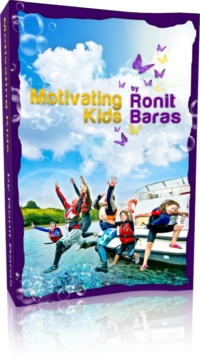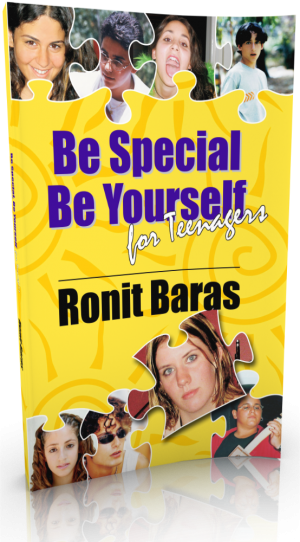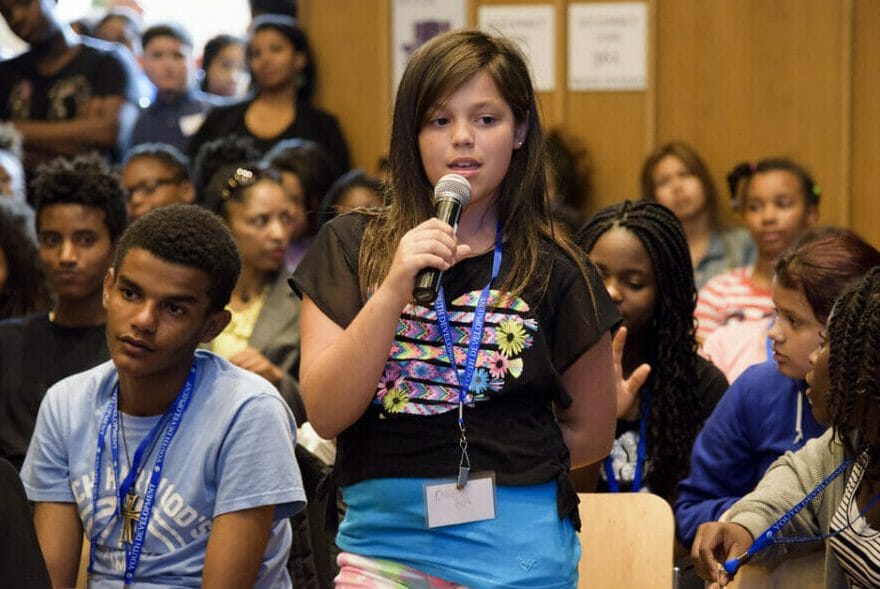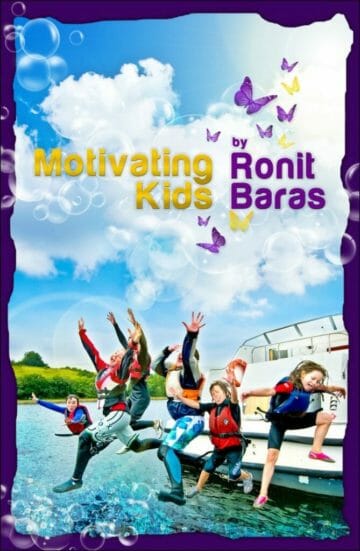 At the beginning of their life, all kids are helpless. Therefore, all parents quickly develop the habit of doing things for them – feeding them, cleaning them, dressing them and keeping them warm. Unintentionally, this also fulfills the parents’ need for certainty and control – the baby will be OK as long as the parents do things properly and the baby does nothing to mess things up.
At the beginning of their life, all kids are helpless. Therefore, all parents quickly develop the habit of doing things for them – feeding them, cleaning them, dressing them and keeping them warm. Unintentionally, this also fulfills the parents’ need for certainty and control – the baby will be OK as long as the parents do things properly and the baby does nothing to mess things up.
As kids grow older, they start to do things by themselves. Imagine the first time a little person grabs a soft teaspoon full of mashed fruit and tried to eat. Messy, isn’t it? Takes a lot longer than when Mom does it, too. Then, parents start to give up their control bit by bit and gradually lose their certainty and sense of perfection.
Most parents are still OK with the kids doing stuff on their own, as long as there is enough time and as long as nothing “bad” comes out of making mistakes. But when there is little time, things “have to” be done properly or the kids could get hurt (physically or emotionally), parental protection instincts kick in and the parents “come to rescue”.
Have a look at this story and I will see you on the other side.
 A man found a cocoon of a butterfly.
A man found a cocoon of a butterfly.
One day a small opening appeared and he sat and watched the butterfly for several hours as it struggled to force its body through that little hole. Then, it seemed to stop making any progress. It appeared as if it had gotten as far as it could and it could go no farther.
The man decided to help the butterfly. He took a pair of scissors and made the opening in the cocoon bigger. The butterfly then emerged easily, but it had a swollen body and small, shriveled wings.
The man continued to watch the butterfly, expecting that, at any moment, the wings would enlarge and expand to be able to support the body, which would contract in time, but nothing happened!
In fact, the butterfly spent the rest of its life crawling around with a swollen body and shriveled wings. It was never able to fly.
In his kindness and haste, the man did not realize struggling out of the restricting cocoon was required to force fluid from the butterfly’s body to its wings so that it would be ready to fly once it was free from the cocoon.
By allowing the butterfly to emerge without struggle, the man had crippled it for life.
Parents can get their kids into trouble too by helping them too much and preventing them from being hurt or struggling. It is easy to see that without allowing your baby to grab that teaspoon and make a mess, he or she will never be able to eat without you. Yet sometimes, it is not as easy to see the effect of rescuing.
I have always needed to leave things a certain way to be able to find what I need later. Not knowing what to make of my particular order of things, my mom used to try to convince me to tidy up. When that took too long to happen, she would “help” me by showing me how my things should be organized. I would come into my room and not be able to find anything!
 Very often, Ronit and I meet “pointing toddlers” – little people who spend their time whining, grunting and pointing their fingers at things, while their parents frantically try to guess what they want. Looking from the side, it is easy to see that the better job the parents do at guessing, the less effort is required of the child to develop speech and the more frustrated the parents will be about their darling being so late to talk.
Very often, Ronit and I meet “pointing toddlers” – little people who spend their time whining, grunting and pointing their fingers at things, while their parents frantically try to guess what they want. Looking from the side, it is easy to see that the better job the parents do at guessing, the less effort is required of the child to develop speech and the more frustrated the parents will be about their darling being so late to talk.
Rescuing is noble business, but with kids, it can go too far. Not rescuing often turns out better.
Ronit has always been our family’s “entertainment crew”. She keeps up with upcoming festivals, family events and kids’ workshops and puts them on our family planner. She is also the one organizing outings and sleepovers with friends. So last summer, Tsoof and Noff spent a lot of time at the beginning of their school holidays waiting for Ronit to keep them busy, active and having fun. Alas, Ronit was busy too.
Before their vacation started, we tried to help our kids plan their time, but being used to us doing everything, they just sat there and waiting for ideas to fall in their lap until we gave up.
At first, they read books, watched TV and played on the computer, but that quickly became routine and stopped being interesting. They came to us in the mornings and asked, “What are we doing today?” We usually answered, “Not sure what you are doing, but we need to work”. This went on for a few days.
One day, Tsoof said he really wanted to “do something”. Realizing we were not going to do it for him, he phoned some of his friends and organized them to meet and play together. He had a really great day and was proud of himself for taking initiative. Later, Tsoof had different arrangements with different friends, but overall, his summer holidays were a lot more exciting than if he had done nothing.
 The way I see it, my job as a parent is to equip my kids for an independent life. I would love to be there for them when they need me, but if I get hit by a bus tomorrow, I want to know they will be OK then too.
The way I see it, my job as a parent is to equip my kids for an independent life. I would love to be there for them when they need me, but if I get hit by a bus tomorrow, I want to know they will be OK then too.
What I do (and may I suggest you do too) is expand my definition of what is safe for my kids to do. I let them make a mess, I let them make mistakes and I even let them get hurt, as long as no serious damage is done to them or to anybody else. I also make myself available for them for a cuddle, putting on a band-aid and talking about what they can learn from their adventures.
Of course, parents are different, so how would you determine what suits you? Here are some things to consider.
What is my motivation to help?
Am I trying to be in control? Am I trying to ensure perfect results or a perfect appearance?
If your motivation is one of these, please reconsider helping. Being in control or keeping things (looking) perfect are short-term aims. Ask yourself what could be some long-term effects of your help.
Am I trying to keep my child from getting hurt?
What is the worst thing that can happen if you do nothing? Play it out in your mind and compare the results of helping and of not helping. I am often amazed at little kids’ ability not to get hurt. They somehow manage to avoid table corners, ditches and other obstacles and to keep wobbling aimlessly without harm. When they do bump into things, they learn about potential dangers and avoid them later on.
Am I trying to teach my kids something?
Surprisingly, many people learn best by doing and by applying their own way of thinking to things. Often, the process teaches us far more than the result. Making mistakes teaches us a lot about what not to do and we can often apply this knowledge in other, seemingly unrelated cases. Let your kids learn by exposing them to many things and encouraging them to do their best.
Where should I draw the line?
 If your child is facing real danger – running onto the road, nearly drowning, etc – move in and move in quickly. If they are going to scrape a knee or bump their head, be there to pick them up and give them a hug, but that’s it.
If your child is facing real danger – running onto the road, nearly drowning, etc – move in and move in quickly. If they are going to scrape a knee or bump their head, be there to pick them up and give them a hug, but that’s it.
If your child is putting someone else in danger – about to poke a pin into another child’s eye, has just turned on the stove (electric or gas, with or without lighting fire), etc – do what needs to be done to save lives. If they smack the other kid and the other kid is crying, let them handle it.
If your child is being abused emotionally or physically, try to guide them through it before you intervene. I once had a fight with another boy and threatened him I would get my dad. When I got home, my dad explained to me that I would not get into trouble for hitting my friend, but if he hit my friend, he would be in a sea of trouble. He said I had to choose if that battle was important enough to fight or not. If it was, I should fight it. If not, I should learn to live with the situation. No matter how frustrated I was to hear this, it made me learn a very important lesson, which I still cherish today.
Have I forgotten anything important? Let me know by posting a comment below.
I know it is hard to let your children do their own thing, especially when they have it tough, but without struggles, there is no strength of character.
Be strong for your kids,
Gal











